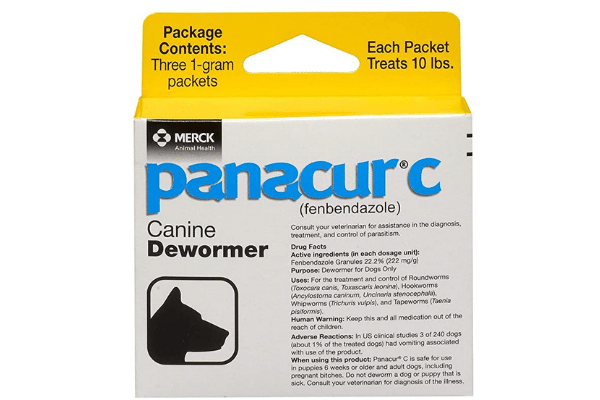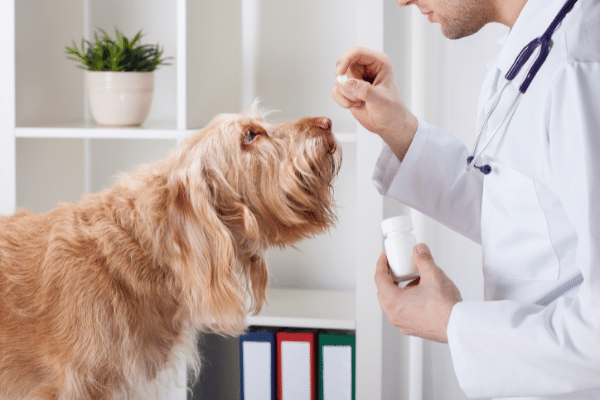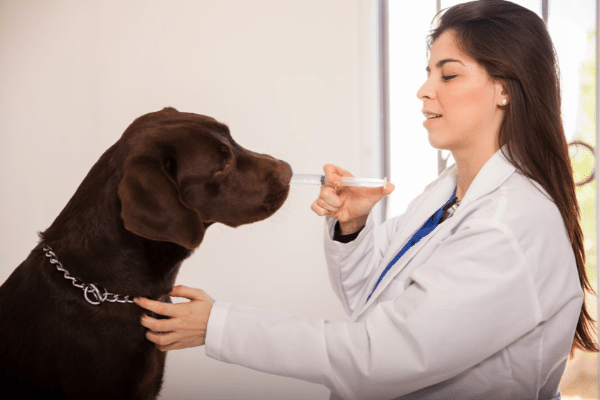Is your dog suffering from worms, and you’ve decided to purchase a goat wormer as a preventative measure? To be honest, I believe you made the best decision possible.
Safeguard goat dewormer is a safe medicine to disinfect parasites from your dog’s body.
Although it is safe for all pets, you must know the correct quantity because an overdose can cause ill effects on his health.
We have listed several guidelines, different formulations, side effects, and how to give your dog dewormers in this article.
As a result, please ensure to read to the end.
What is Safeguard, and how does it work?
Safeguard goat dewormer is a medicine used to kill the worms inside the pets’ stomachs.
It is approved by the U.S. Food and Drug Administration. It is an anthelmintic (describe drug use in treating infections of animals with parasitic worms)
The main component of this medicine is Fenbendazole. It helps fight against whipworms, roundworms, hookworms, giardiasis, and some species of tapeworms.
Did you know roundworms and hookworms can even make humans ill?
Safe-guard works to inhibit the worm’s energy metabolism, and it’s incredibly safe to use because it only affects the parasites, not the dog’s tissue.
If you give this to your dog, there is no certainty that you will be able to see worms in his poop.
In the case of adult dogs, you can give Safeguard to your dog once a year or twice a year. However, the amount can fluctuate as per the dog’s age and health condition.
For example, a breeder gives Safeguard worms right every month before breeding so that the worms do not bypass their puppies.
So, the new puppy owner will deworm his baby according to the vet’s advice.
He will treat him when he or she crosses 6, 8, 10, and 12 weeks and lastly when he or she completely turns one; then it will be required every six months.
If you want to use Safeguard appropriately, talk to your vet.
The different formulations of Safe-guard

Fenbendazole granules, fenbendazole liquid suspension, and fenbendazole paste are some of the different formulations available on the market.
One of the general formulations is the safeguard granules as it is easy to feed your dogs and also comes in convenient packaging.
The liquid and paste formula is generally used for big animals. However, it can also be given to cats and dogs only with vets’ advice and instructions.
Safeguard liquid 10% suspension is an effective dewormer medicine for cattle and horses it is one of the standards and available in a 1000ml bottle 100mg per ml of Fenbendazole is present in it.
It could be a budget-friendly option if you have many dogs or a large kennel.
How to assist Liquid Safeguard with dogs?

You can give Safeguard liquid for dogs to your dog once your vet has given you the suitable dosage based on your dog’s weight.
Let me tell you before it can be a bit complicated.
Some dogs will happily drink liquid meds, but others will flatly refuse anything with a weird odor they don’t recognize.
If your dog also comes in the same category, know how to fool your dog and help him get deworming treatment in the next section.
Let’s start mixing in food.
Purchasing canned dog food is a wonderful strategy. Canned food is alluring to most dogs, especially those dogs who eat only dry food.
If your dog has no dietary limitations, the liquid Fenbendazole should be applied directly to the meal.
Give your dog a small amount of medication-free canned dog chow. It will help in lowering your dog’s suspicion level.
According to your veterinarian’s recommendations, prepare the suspension as directed in the vessel, then use a dropper or an oral syringe to administer Safe-guard.
Now, you can blend the liquid suspension in your dog’s food. Please give him a small portion because he may not like the smell or taste and may leave the food.
When you give your dog a small portion, he will enthusiastically consume it. But, in case he refuses to eat, move on to the next step.
Using the mouth to administer
Make the Safeguard liquid dogs as per the instruction printed on the package and take the help of a syringe or dropper.
Always check that your dog is in a happy mood when you give it to him. Use a wall to prevent your dog from backing up for your comfort.
Tell your dog to sit down, swiftly hold his face, and grasp his muzzle, tilting in one direction.
With the help of another hand, you put the medicine into the space between his cheek and back teeth.
Make sure that it gets inside his mouth slowly because if it does not, he may choke or throw it up.
Please keep your dog’s mouth close for a few moments and stimulate swallowing by blowing into his nose or gently stroking his throat until the swallowing reflex is felt.
If your dog throws out the medication, do not give him another dose unless you are sure that he will spit out the full amount.
Remember to give your dog a pleasant treat as a reward for his or her cooperation.
Things to know about using Fenbendazole beforehand

Even at greater doses, Fenbendazole (Safeguard or Panacur) is unlikely to be useful as a one-time treatment.
Fenbendazole must generally be given one time a day for several days in order to be successful. The typical dosage for dogs is 25 mg per pound (50 mg/kg) daily for three days.
Don’t be mistaken, even if you feel your dog is okay after 1, 2 doses. Still, keep continuing the dose as there is a chance of relapse.
Although Safeguard liquid for dogs is available by prescription, I will strongly advise that you give them under a veterinarian’s supervision.
The best way is to give your dog a sample of your dog’s poop so he can figure out what type of parasite is in his body and prescribe the most effective dewormer.
Moreover, your veterinarian is the ideal person to ask about your pet’s optimal liquid dewormer dosage.
Are there any side effects?
Generally, there is no side effect of the fenbendazole dose. However, in rare conditions, it can cause allergic reactions (when you give an overdose)
In case your dog is showing side effects, the common reactions are
- Swelling face
- Diarrhea
- Seizures
- Itchiness
- Hives
- Salivation
The least common side effects are
- Raised heart rate
- Slowed heart rate
- Coma
- Shock
- Paralysis
- Tremors
- Salivation
- Vision problems
- Loss of coordination
You must speak to your vet as soon as possible if you see any of the symptoms above.
Although the effects of this drug should wear off in a few days, in case the dog has a liver problem or kidney issue, it can last longer.
Fenbendazole is generally safe to use for almost all pets. But, there are a set of guidelines that you will learn in the coming section.
Safety Guidelines
There are a set of instructions that you must follow before you give your dog Safeguard goat wormer.
- First and foremost it is important to never give medicine without consulting your vet.
- Make sure you tell your vet if your dog is on any other medications or supplements.
- Always inform them about your dog’s health.
- Liquid doses should be taken with meals or immediately after a meal.
- Prohibit giving paste to the mother dog or lactating dog.
- Fenbendazole should not be given to young puppies who are younger than six weeks and who are already sick.
Well, that’s a wrap!
Safeguard goat dewormer is a great medicine to get rid of hookworms, roundworms, tapeworms, and lungworms.
To know the right dosage, you must speak to the vet; he is ideal for receiving the right information.
Because, in case you overdose, it can cause side effects to your dog. Well, after knowing the dose quantity, you can either feed them directly or indirectly via food. It is all up to you.
There is a list of guidelines that you must know before starting this medicine; if you want to know, read our article and please share this with pet owners too.

Dr. Aram Baker has been with Santa Clarita Animal Hospital since 1995 and his special interests include behaviour medicine and dermatology. He graduated from the Cleveland Humanities Magnet Program in Reseda, CA and attended California State University at Northridge where he received a Bachelor’s degree in biology. He went on to pursue his Doctorate in Veterinary Medicine at the University of California at Davis. He also spent time in the zoological medicine department at U.C. Davis during his Junior and Senior years. He is dedicated to caring for all pets big or small, young or old with compassion, patience, kindness, and love.
